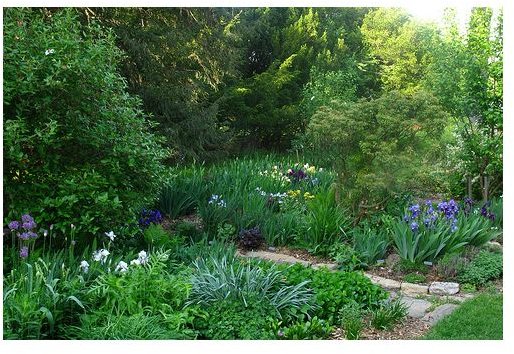Direct Composting Organic Materials When You Can't Have A Compost Pile
A Simple Way to Recycle Organic Matter Into Your Garden
Many municipalities and most gated, deed restricted communities do not allow compost piles. So how do you go about recycling your organic waste for use in your garden? Direct composting, also known as trench composting, will keep those organic wastes out of your garbage, and add nutrients and more to your garden soil.
What is Direct Composting?
Direct composting is simply burying your organic waste under the soil in your garden, and allowing it to turn to compost there. When done correctly, this organic recycling method is clean and environmentally friendly. Direct composting also encourages worms in your garden, which help to aerate and enrich the soil
What Organic Material Can You Recycle with Direct Composting?
Anything that you would put into a compost pile can be used for direct composting. Some materials work better than others, but anything organic, biodegradeable, and non-toxic can be added to your garden soil.
The easiest material to use for direct composting is kitchen scraps, such as fruit and vegetable peels and cores. You can also compost cooked foods, but as with a regular compost pile, you won’t put meat products or feces of any animal that eats meat products into your garden. Bird and fish droppings are acceptable direct composting material. Paper and cardboard can also be used, if chopped in to small pieces and added to kitchen scraps. The bacteria works faster on kitchen scraps, so mixing the paper in with them will allow them to break down at the same rate.
How is Direct Composting Done?
There are a couple of methods of direct composting, but the most popular and easiest direct composting method is to simply bury the scraps under the soil in your garden. For this to be most effective, you will dig your hole deep enough so that at least 6 inches of soil will be on top of your organic material. This keeps animals from sniffing it out and digging it up, and also keep flies away..
The second method of direct composting is to blend the scraps in a blender or food processor with water, and pour them into a trench around each plant. This method is more for feeding the plants than amending the soil, and is useful for very young plants. This direct composting method method allows the organic matter to break down more quickly. The trench should be dug from the drip line outward from 3-6 inches (depending on how much material you have), and at least 6 inches deep. This will allow the feeder roots access to the nutrients, without damaging the existing root system.
Small amounts of blended compost can also be fed to potted plants and indoor plants. This is accomplished by poking holes at least 4 inches deep into the soil all the way around the plant (at least 4 holes) and adding about an inch of the blended compost into each one. Make sure to fill the compost holes with soil, so as not to attract fruit flies and gnats.
Why is Direct Composting Better?
Many types of kitchen composters are also available, however, they are expensive and can get smelly, and breed fruit flies and maggots if the balance is not kept exactly right. Direct composting is much simpler, and eliminates the need to keep your garbage indoors. In addition, while the organic materials are decomposing, the nutrients are released directly to the plant roots, where they are most needed.
When direct composting in winter, keep in mind that the bacteria are not active in the soil until it reaches a proper temperature, so your materials will not break down until spring.
Whether you have a large garden, or a few container grown vegetables on your apartment terrace, recycling your organic materials by direct composting can work for you.
Source: The author has an AS in Horticulture and has been gardening for ever 40 years. She has been writing about gardening since 2008.
